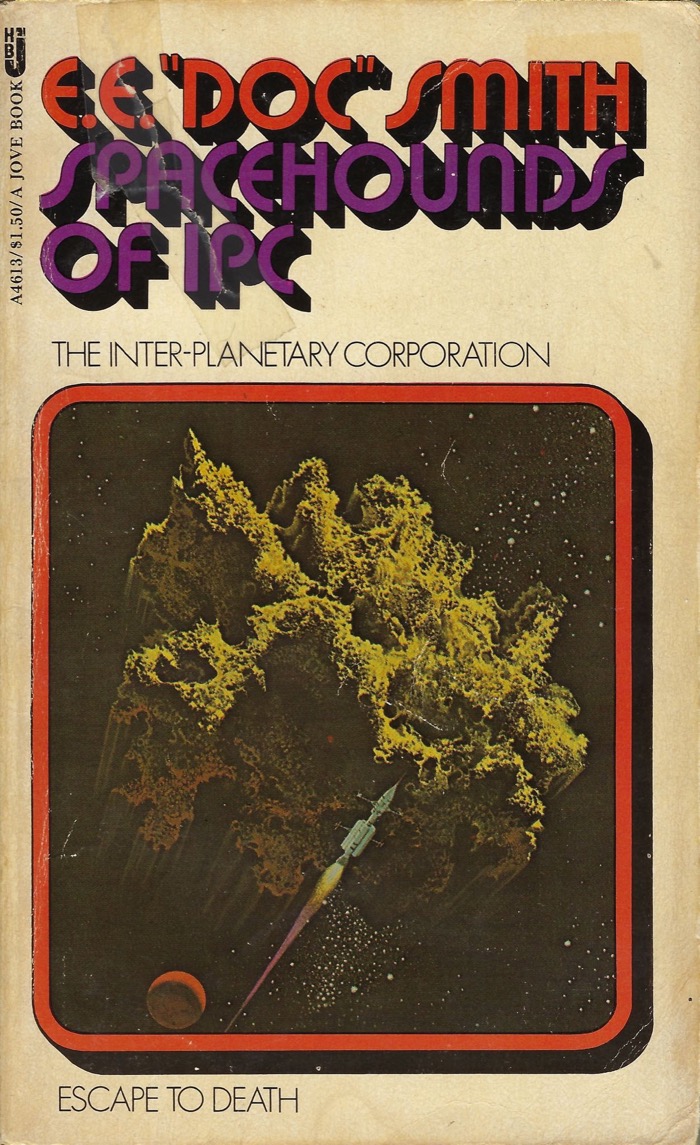Spacehounds of IPC
Reviewed date: 2006 Feb 23
Rating: 3
220 pages
Plot: The IPV Arcturus, en route to Mars, is attacked by Jovians and sliced into slivers like a watermelon. Steve and Nadia survive by hiding in an airtight closet, and when the Jovians tow the broken pieces of Arcturus back to Jupiter, Steve and Nadia make their escape to Ganymede. They hunker down and bide their time while Steve builds a fancy new radio that he uses to call for help from Earth.
Earth delivers. Steve's super-scientist friends show up on the Sirius, which they have outfitted with astounding new weaponry newly invented to defeat the Jovians. Sirius and the humans of Earth, Mars, and Venus ally themselves with the newly discovered humanity of Saturn's moons to fight the Jovians. The Jovians are utterly defeated.
Historical significance: Spacehounds of IPC is a historically significant book in science fiction because it, along with E.E. "Doc" Smith's other books, defined the whole subgenre of space opera. The plot of Spacehounds of IPC seems slightly cliched today, but it was not so at the time, because Doc Smith invented those cliches. For example, in Spacehounds of IPC alone Doc Smith coins the terms "tractor beam" and "force field." In later stories he invented "hyperspace" and "mothership." Today one cannot imagine science fiction without those ideas.
Spacehounds of IPC is a treasure-house of science fiction history. It's also a great story. But oh, the dialog! The rest of the story is great, but when the characters open their mouths the dialog makes me cringe. It is the worst example of the wooden characters so prevalent in early science fiction. The genre has progressed since the 1930s, and the result is overwhelmingly positive. Spacehounds of IPC could not be published today without some heavy editing of the dialog.
Still, it's one of my favorite books.
